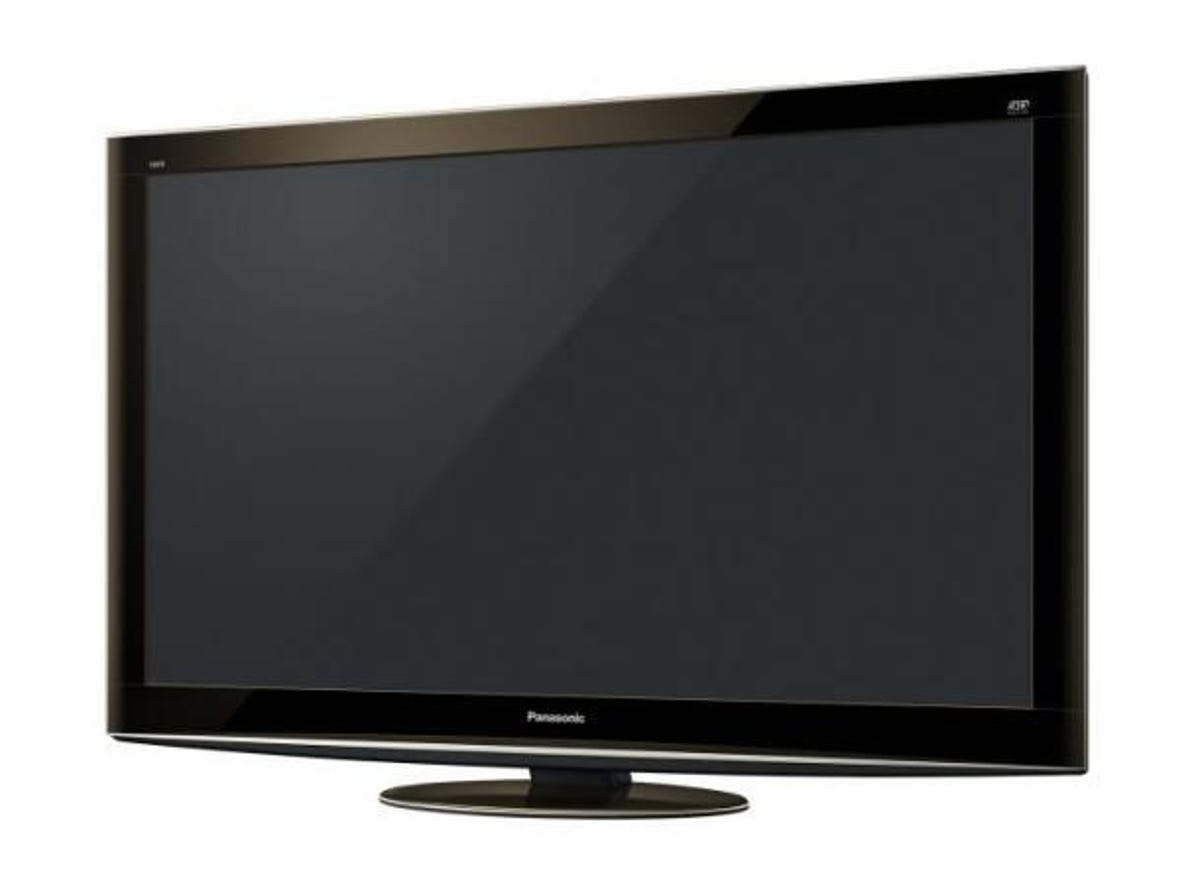CES 2010: Where are they now? (photos)
As we head into CES 2011, it's time to take a look at where 2010's most notable award-winners and headline-grabbers are at.

Panasonic TC-PVT25
Now: Almost a year later, the jury is still out on whether or not 3D is a must-have feature. But there's no debate as to whether the the TC-PVT25 is an excellent television: it was one of only two TVs to earn the CNET Editors' Choice award in 2010.
Bottom line: "With both 2D and 3D sources, Panasonic's flagship TC-PVT20/25 series plasma TV delivers outstanding overall picture quality."
Intel Wireless Display
Now: Intel Wireless Display has made its way into a number of laptops, but certainly not the majority. One continued annoyance: it requires a $99 box to display the AV signal on a TV, and that accessory still hasn't dropped in price--nor has the technology been built into any TVs, Blu-ray players, or Roku-style boxes. Meanwhile, a number of competing technologies have stolen Wi-Di's thunder a bit, including game consoles with Netflix and Hulu, TVs with Internet widgets, and a variety of set-top boxes and Blu-ray players. Still, Wi-Di remains the most versatile and self-contained way of streaming your laptop's video to a TV--and unlike the browsers built into Google TV and Boxee, the content can't be blocked.
Read our analysis: Wireless Display, one year later.
My Ford Touch interface
Now: Ford sales are on a roll. There are a variety of reasons, to be sure--it was the only American automaker to turn down a government bailout--but the inclusion of the MyFord Touch technology in the full range of Ford vehicles has been a huge factor in distinguishing them competing models in the same price range.
Read the review of the 2011 Ford Edge, the first Ford car with MyFord Touch.
Motorola Backflip
Now: The Backflip came out early in 2010 to mixed reviews. With its release overshadowed by the Nexus One (which was announced during CES, but not at CES) and a slew of other, better Android phones, the Backflip quickly became an afterthought in a smartphone-saturated market, and at the end of the year it's hardly mentioned in any best-of-the-year phone roundups. Still, that touch pad was an interesting idea.
Bottom line:"As AT&T's first Android phone, the Motorola Backflip offers a unique design but it's rather lackluster in the features and performance department. It's a decent choice if you're upgrading from a feature phone, but anyone looking for speed and power should look elsewhere."
Lenovo IdeaPad U1 Hybrid
Now: The U1 never saw the light of day, although it may be revived in 2011. Like any concept device, its practicality suffers--and Lenovo dropped Skylight OS development earlier this year. And yet, the U1 remains a prescient idea. Conceived before the iPad and before tablets took off in 2010, Lenovo's idea could still be a great one if executed properly, and paired with a high-quality tablet and laptop.
Dell Alienware M11x
Now: We gave four-star reviews to both Alienware M11x configurations we tested in 2010, and still recommend them highly for anyone looking for a unique mix of higher-end graphics and a low-voltage CPU in a tiny, highly portable frame. Plus, these tiny laptops boast surprisingly powerful speakers. In the 11.6-inch laptop landscape, there's nothing like them.
Bottom line:"With its fusion of a low-voltage processor and high-end graphics, the 11.6-inch Alienware M11x is a unique and extremely compact hybrid gaming laptop with a few compromises for its size."

LG BD590 Blu-ray player
Now: Blu-ray players have focused more on set-top-box features and Internet widgets such as Hulu Plus and Netflix, but the BD590 still stands alone for its added CD ripping and hard drive. With Blu-ray players becoming more commoditized, manufacturers will continue to need these sort of bells and whistles to distinguish high-end models--and to justify their higher prices.
Bottom line: "The LG BD590 deftly handles Blu-ray playback, CD ripping, and streaming media services like Netflix from a single box, but you'll have to pay for that simplicity."
Tenrehte Technologies Picowatt Wi-Fi smart plugs
Now: Consumers still can't get their hands on these smart plugs, although they've apparently been available to business customers.
Eye-Fi Pro X2
Now: Eye-Fi cards are still a great way to enable a camera to connect to the internet for instant uploading, but ever-faster and more capable smartphones with better cameras and faster 4G network connectivity are proving just as viable a solution for those not concerned with image quality. The X2 remains a top choice for its expanding network of compatible free Wi-Fi hot spots and geotagging features.
Valups Tivit
Now: Another (mostly) vaporware device. The Tivit was redubbed the Tivizen, but it never really appeared for sale in the U.S. That said, it's apparently alive and well in Japan, and the iOS app is available. We expect to see similar devices at CES 2011, now that MDTV broadcasts are actually ramping up.
Smartbooks
Now: Smartbooks have vanished, in part because of the success of the iPad and the growth in Android phones and tablets. Perhaps they're not gone forever, though: after all, Google Chrome essentially has the same model for cloud-based apps that Skylight did. Stay tuned...
Toshiba Cell TV
Now: Cell TV is vaporware, with no actual product on the horizon. But some of these features--such as built-in Wi-Fi and videoconferencing--are already appearing on certain TV models.

